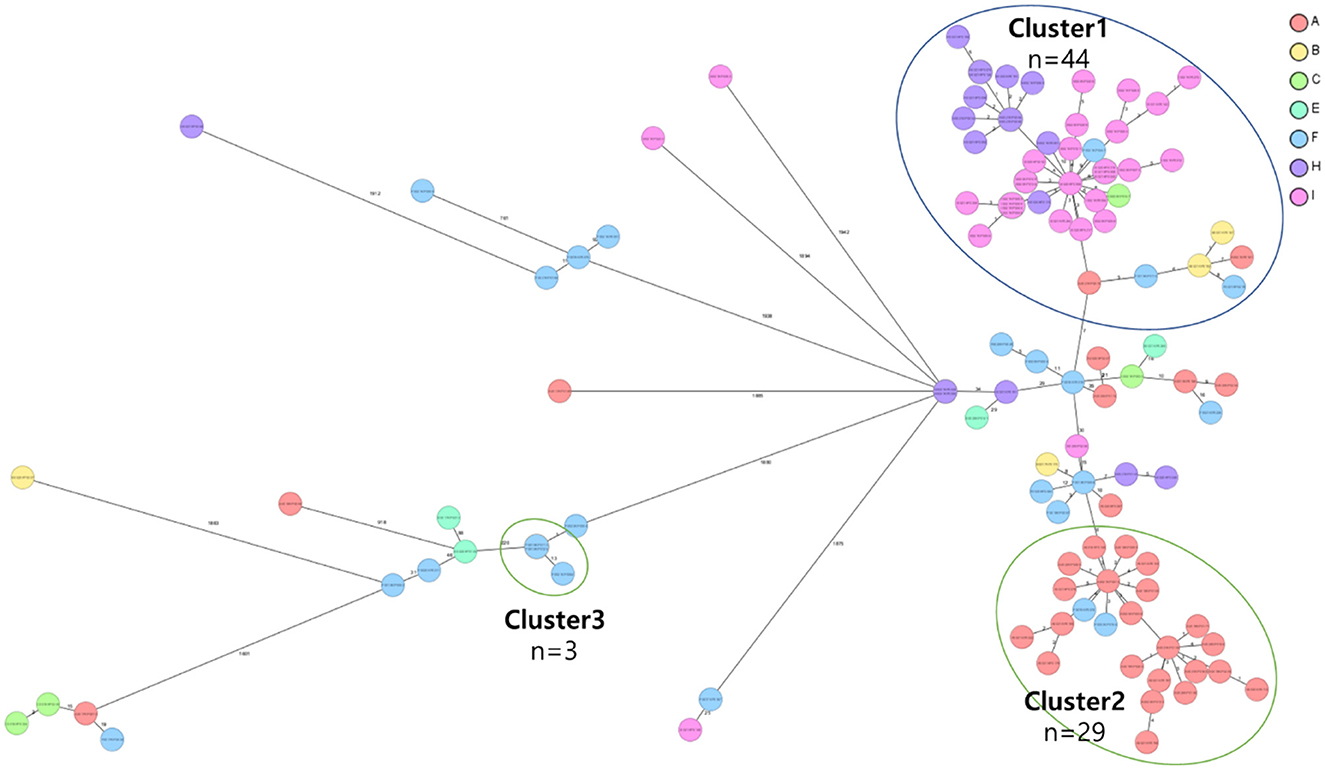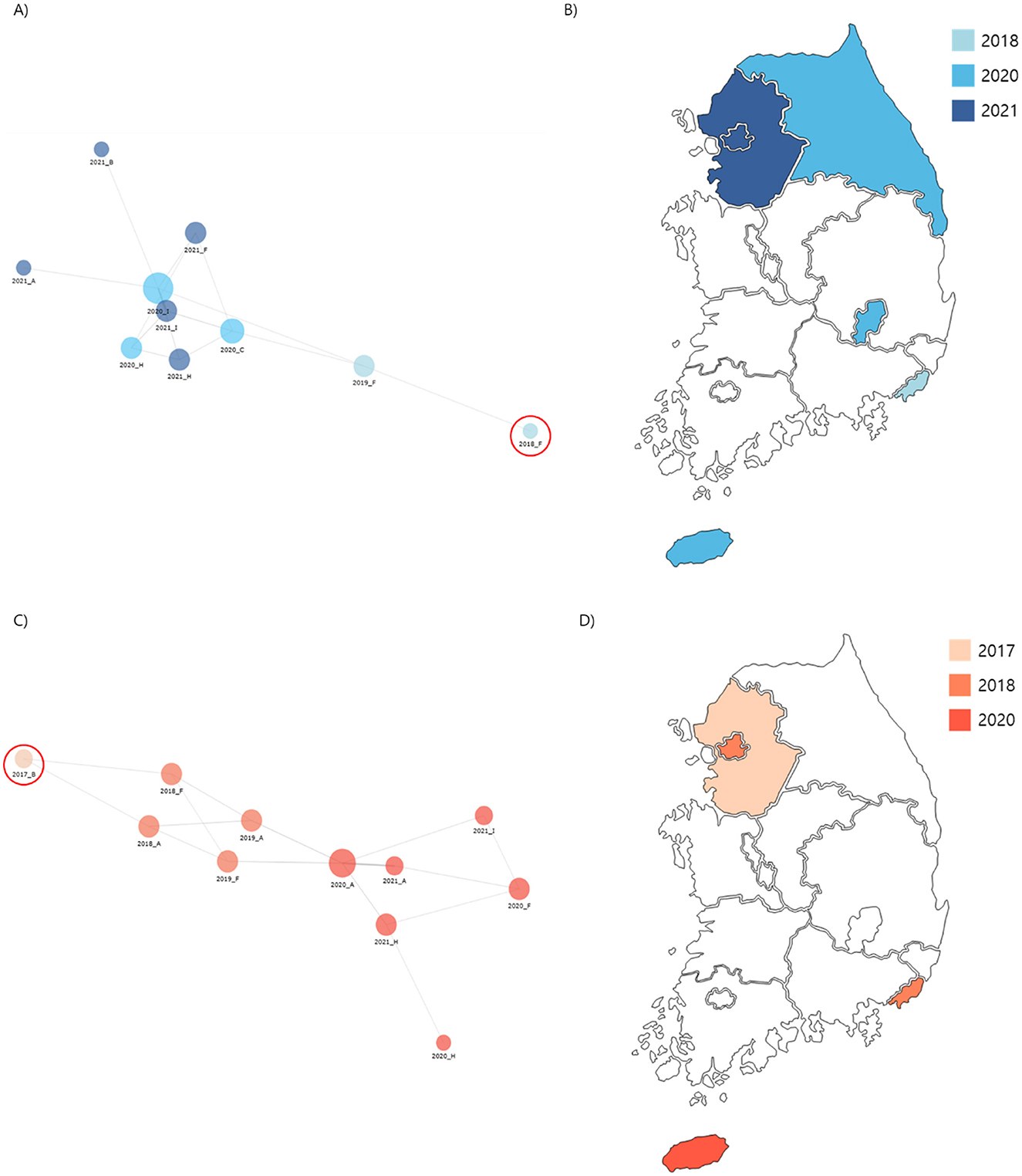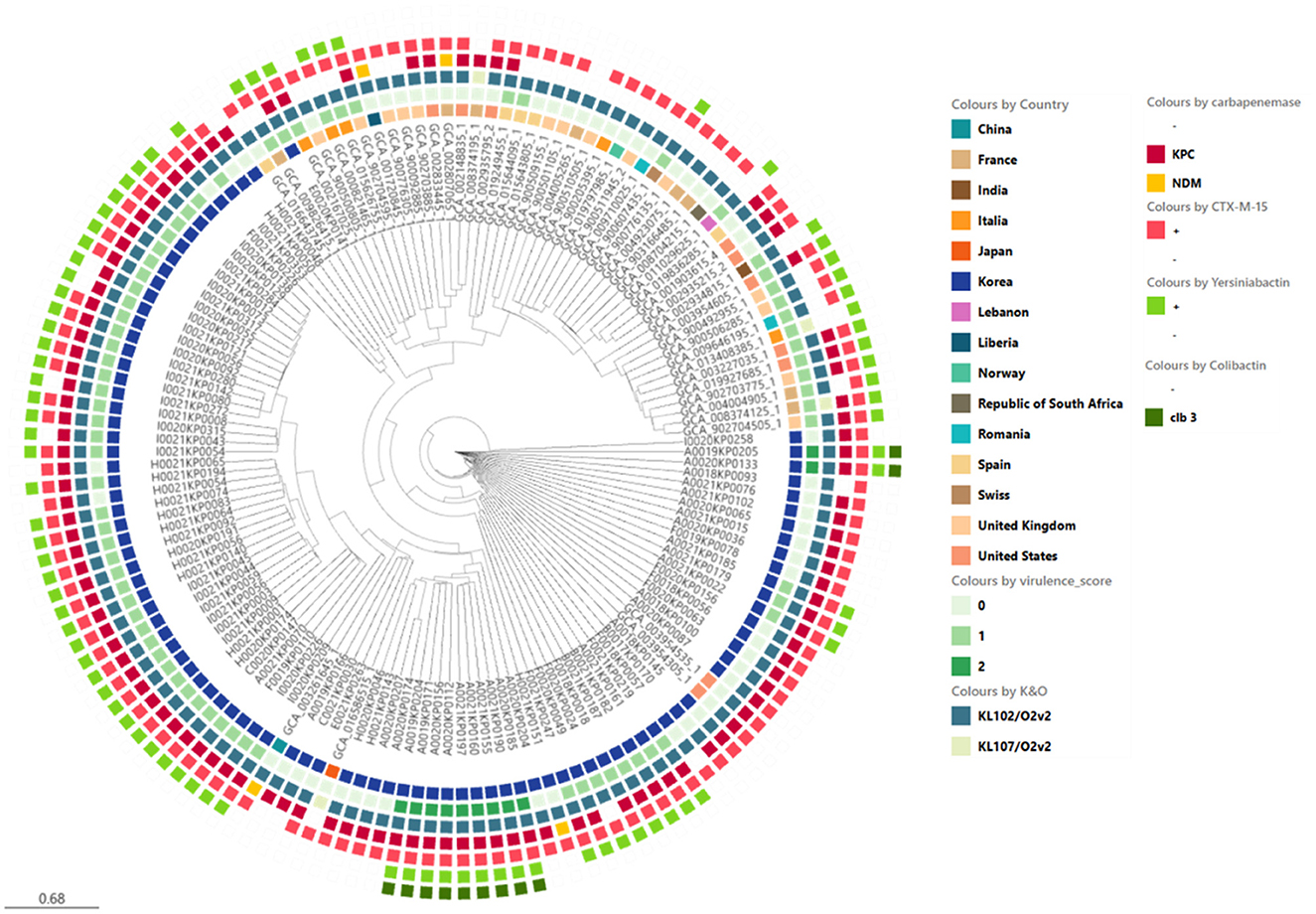- 1Division of Antimicrobial Resistance Research, Center for Infectious Disease, National Institute of Health, Korea, Cheongju, South Korea
- 2Division of Zoonotic and Vector Borne Diseases Research, Center for Infectious Disease, National Institute of Health, Korea, Cheongju, South Korea
- 3Division of Biobank for Health Sciences, Department of Future Healthcare, National Institute of Health, Korea, Cheongju, South Korea
A corrigendum on
Genomic analysis of carbapenem-resistant Klebsiella pneumoniae blood isolates from nationwide surveillance in South Korea
by On, Y., Kim, J. W., Lee, J., and Yoo, J. S. (2025). Front. Microbiol. 16:1562222. doi: 10.3389/fmicb.2025.1562222
In the published article, there was an error in Figures 1, 3, 4, 5, and their respective captions, as published. Figures 1, 3, 4, 5, as used in the published article, were not the latest iterations of these figures.

Figure 1. Antibiotic resistance patterns in carbapenem-resistant Klebsiella pneumoniae (CRKP) isolates. The heatmap shows the antibiotic resistance patterns of CRKP isolates from 2017 to 2021. Each cell represents the number of isolates exhibiting a particular resistance pattern, with darker red shades indicating higher numbers of isolates. For readability, the patterns are abbreviated and matched to arbitrary code.

Figure 3. Core genome multi-locus sequence type (cgMLST) analysis of carbapenem-resistant Klebsiella pneumoniae (CRKP) isolates from the nine region hospitals in Korea. The isolates were analyzed using cgMLST in Ridom SeqSphere+ and were visualized in a minimum spanning tree. Isolates with 12 allele differences between them were grouped together in clusters with the isolates per cluster shown in circles. The number of different alleles between clusters and unique isolates is shown on the connecting lines (not to scale).

Figure 4. Phylogenetic analysis of carbapenem-resistant Klebsiella pneumoniae (CRKP) isolates from ST307 Cluster 1 and 2. (A) A core-SNP tree and cgMLST analysis were used to visualize isolate relationships, with a node-link diagram highlighting Cluster 1 proximity. (B) Spread routes of strains in Cluster 1 by region. (C) A node-link diagram visualizing isolated strains in Cluster 2, with the same layout and parameters as (A). (D) Spread routes of strains in Cluster 2 by region, using the same visualization style as (B).

Figure 5. Phylogenetic analysis of ST307 Klebsiella pneumoniae isolates including domestic and global reference genomes. The SNP-based neighbor joining (kSNP4) phylogenetic tree was generated. KPC gene and VF genes are indicated.
The corrected figures, in addition to their corrected captions, appear below.
In the published article, there were numerous textual errors in Section 3.2, “Characteristics of CRKP isolates.”
A correction has been made to the following sentences within Section 3.2:
1. “The most prevalent pattern, designated P4, exhibited resistance to antibiotics belonging to the penicillin, cephalosporin, carbapenem, monobactam, aminoglycoside, fluoroquinolone, tetracycline, and sulfonamide classes.”
2. “The P4 pattern was first identified in 2018 and showed a marked increase by 2021 (Figure 1).”
3. “This pattern was initially detected in Region A in 2017 and was confirmed to be confined to this region until 2019.”
4. “By 2021, the presence of the P4 pattern had been further verified in a hospital in Region I, which participated in the Kor-GLASS surveillance system for the first time.”
The corrected sentences appear below:
1. “The most prevalent pattern, designated P21, exhibited resistance to antibiotics belonging to the penicillin, cephalosporin, carbapenem, monobactam, aminoglycoside, fluoroquinolone, tetracycline, tigecycline, and sulfonamide classes.”
2. “The P21 pattern was first identified in 2018 and showed a marked increase by 2021 (Figure 1).”
3. “This pattern was initially detected in Region A in 2017 and was confirmed to be confined to this region until 2019.”
4. “By 2021, the presence of the P21 pattern had been further verified in a hospital in Region I, which participated in the Kor-GLASS surveillance system for the first time.”
The authors apologize for these errors and state that they do not change the scientific conclusions of the article in any way. The original article has been updated.
Publisher's note
All claims expressed in this article are solely those of the authors and do not necessarily represent those of their affiliated organizations, or those of the publisher, the editors and the reviewers. Any product that may be evaluated in this article, or claim that may be made by its manufacturer, is not guaranteed or endorsed by the publisher.
Keywords: antibiotic resistance, whole-genome sequencing, nationwide, surveillance, carbapenem, genomic epidemiology
Citation: On Y, Kim JW, Lee J and Yoo JS (2025) Corrigendum: Genomic analysis of carbapenem-resistant Klebsiella pneumoniae blood isolates from nationwide surveillance in South Korea. Front. Microbiol. 16:1627539. doi: 10.3389/fmicb.2025.1627539
Received: 12 May 2025; Accepted: 29 May 2025;
Published: 11 June 2025.
Edited and reviewed by: Je Chul Lee, Kyungpook National University, Republic of Korea
Copyright © 2025 On, Kim, Lee and Yoo. This is an open-access article distributed under the terms of the Creative Commons Attribution License (CC BY). The use, distribution or reproduction in other forums is permitted, provided the original author(s) and the copyright owner(s) are credited and that the original publication in this journal is cited, in accordance with accepted academic practice. No use, distribution or reproduction is permitted which does not comply with these terms.
*Correspondence: Jung Sik Yoo, anVuZ3Npa3VAa29yZWEua3I=
 Younggwon On
Younggwon On Jung Wook Kim
Jung Wook Kim Juyoung Lee3
Juyoung Lee3 Jung Sik Yoo
Jung Sik Yoo